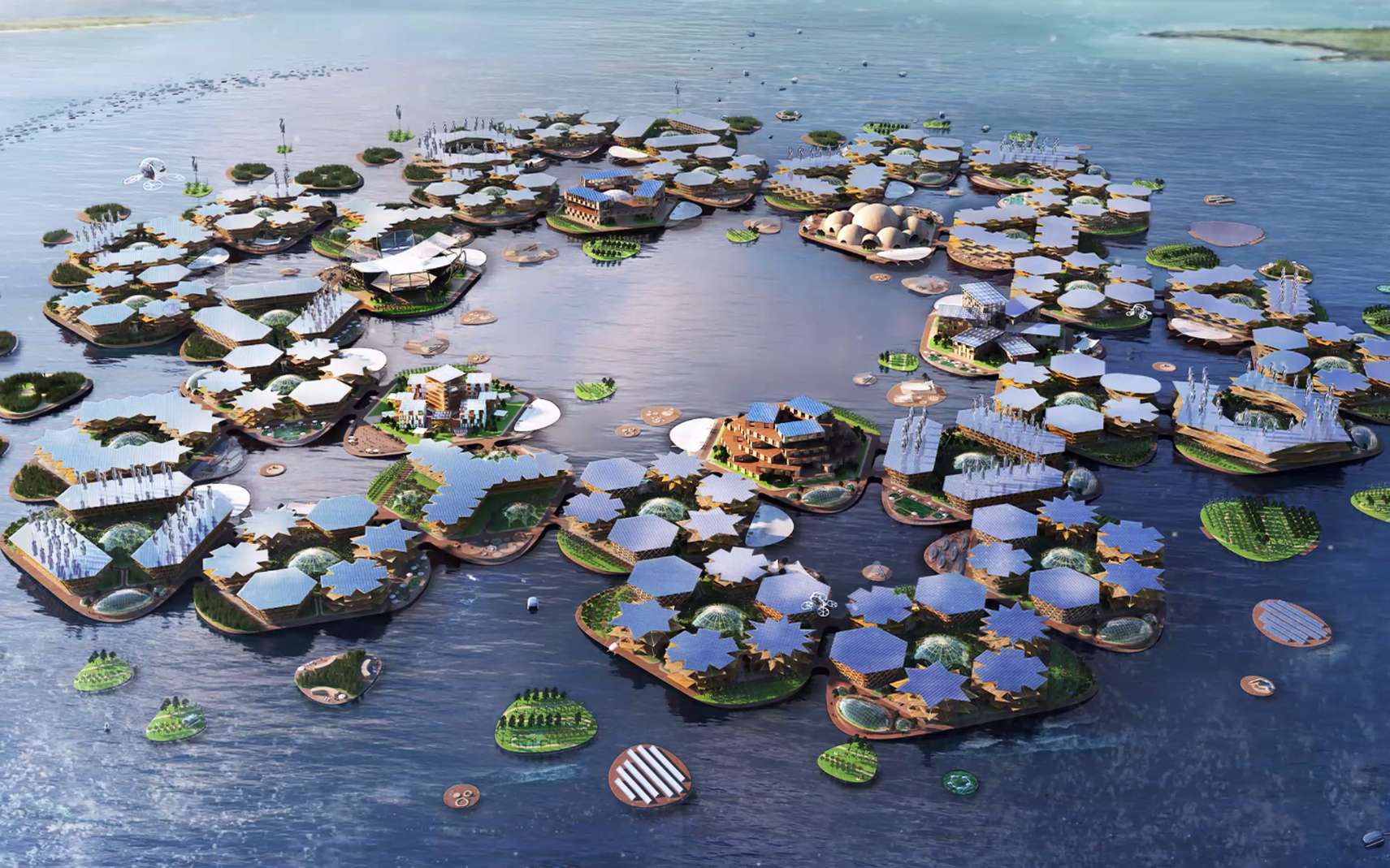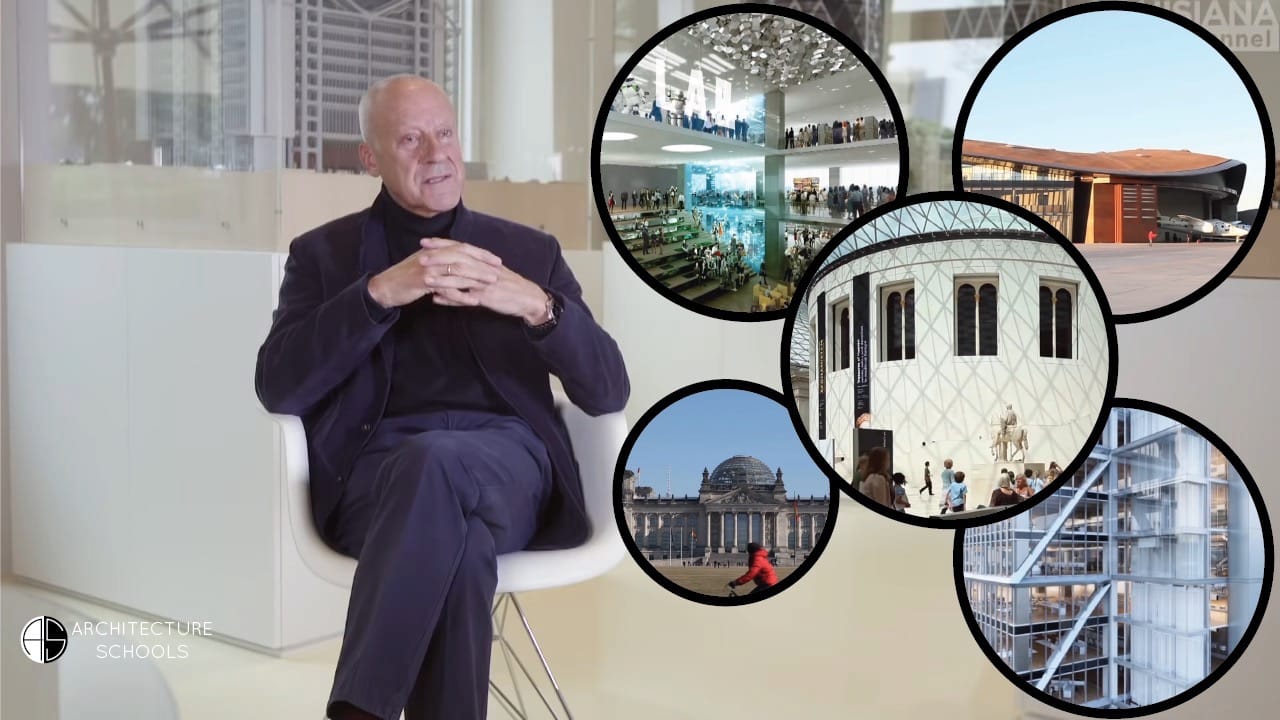While the 2.4 billion people living on the coasts are directly threatened by rising waters and hurricanes, a project for a modular and autonomous city has just been presented to the UN. Entirely based on the principle of sustainable development, this city will supply its residents with water, energy and food in the event of a natural disaster.
Faced with the threat of global warming, many concepts of floating cities have emerged in recent years. From the Mayan pyramids of the Italian architecture firm Lazzarini to the real “state” of the Seasteading Institute off the coast of French Polynesia and LilyPad, a sort of giant water lily in an artificial lagoon imagined by the architect Vincent Callebaut, most of them remain at the utopian stage.
The latest project, however, caught the attention of the United Nations during a roundtable discussion on April 3 in New York. Designed by the architectural firm Bjarke Ingels Group (BIG) for the startup Oceanix and supported by the MIT Center for ocean engineering and the Explorers Club (a group of scientists supporting land and space exploration), this modular city “is part of the solution to the climate crisis,” said Maimunah Mohd Sharif, the UN’s Executive Director for Human Settlements. She assured that the organization would support the project.

An assembly of hexagonal platforms
Already the creator of floating housing in Copenhagen, Bjarke Ingels has set his sights on a much larger scale: a fully autonomous city capable of withstanding all types of natural disasters (floods, tsunamis and category 5 hurricanes). The concept is built around hexagonal platforms of 20,000 square meters, each able to accommodate 300 residents. These structures are assembled in “villages” of six hexagons, arranged around a greenhouse. For Bjarke Ingels, the ideal number of inhabitants would be 10,000 people (i.e. six villages of six platforms), as this would allow total autonomy in terms of energy, drinking water and heat.

Sustainable materials and clean mobility
Everything is indeed based on sustainable development. The platform will be anchored about 1.6 kilometers offshore to reefs made of “Biorock”, a natural material formed by underwater minerals exposed to an electric current that strengthens over time. The buildings, which can be completely disassembled, will be constructed from sustainable materials (bamboo, wood…) and limited to a height of seven stories to keep the center of gravity low. Water will be supplied by rain harvesting, desalination or by condensed and filtered atmospheric air. No cars allowed: travel will be by bicycle, drone or electric boat). Waste will be transported via pneumatic tubes to a sorting center where it will be recycled or reused.

A real “marine agriculture” will allow to feed the inhabitants, with for example cages under the platforms to raise scallops and other seafood, seaweed cultures or aquaponic farms to fertilize the plants. Uninhabited islands will also be dedicated to food production or electricity production (for example with solar panels).
The floating city will be moored near cities and the modules can be towed in case of disaster. Unlike artificial island projects for billionaires, Oceanix city is primarily aimed at the populations most vulnerable to rising waters and who cannot afford to pay high rents in the city, the startup says.

The floating city, still a utopian concept
Although in vogue and responding to a real problem, this kind of floating city raises a lot of questions: who really wants to live several kilometers in the middle of the sea? What will be the means of transportation to go to work on the coast? Will aquaponic agriculture and urban farms be enough to feed the entire population? What will happen if there is a water shortage or power outage? Oceanix, founded in 2018 by Marc Collins Chen, the former tourism minister of French Polynesia, assures that it is determined to see the project through. With what funding? Mystery. The UN has been careful not to announce any participation.
WHAT TO REMEMBER
The startup Oceanix and the architecture firm BIG presented the UN with a concept of an autonomous floating city.
It will be able to withstand floods and hurricanes and produce its own energy and food.
Entirely based on the principle of sustainable development, this city remains above all a “toolbox” for future achievements.


